Understanding and effectively rehabilitating a calf strain is crucial for athletes looking to return to their sport. Today, we’ll delve into the nature of calf strains, recovery processes, and essential rehabilitation exercises. Tailored for those who have recently recovered from an injury, whether professional athletes or passionate amateurs, it will hopefully help shine a light on what to expect.
What is a Calf Strain?
A calf strain is a localised injury to one of the six muscles in the calf, divided into two compartments: deep and superficial. The deep compartment includes the Flexor Hallucis Longus (big toe muscle), Flexor Digitorum longus (toe muscle) and tibialis posterior (arch controller). The superficial compartment comprises the Soleus, Gastrocnemius, and Plantaris. These muscles play a vital role in plantarflexion (pushing the ankle down), essential for athletic performance.
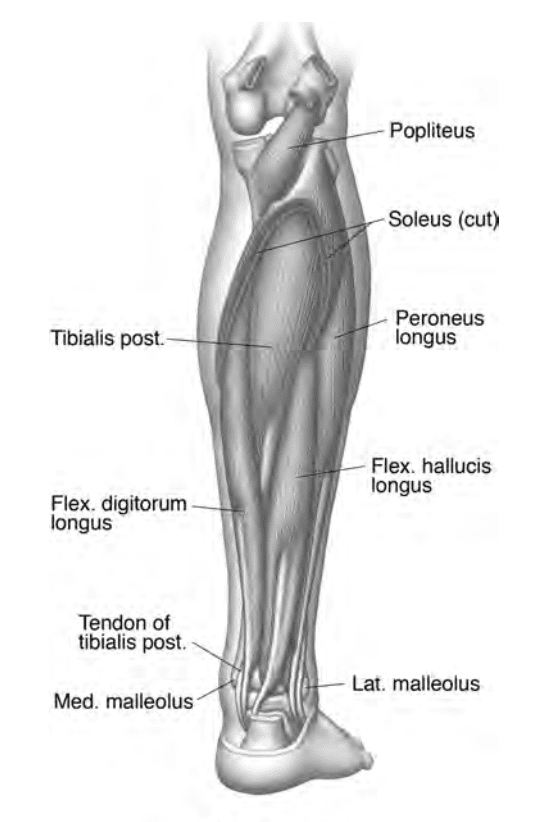
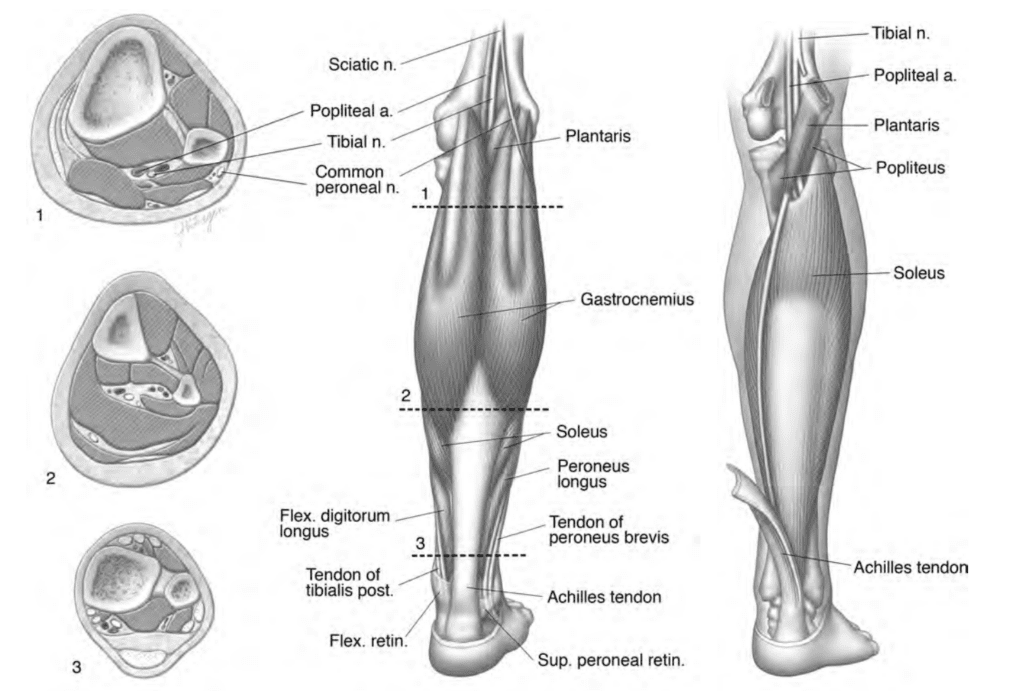
When discussing calf injuries, the Soleus and Gastrocnemius are most often involved. The Gastrocnemius, a two-joint muscle, is primarily made up of fast-twitch fibres, rendering it extremely explosive but prone to acute strains during activities like sprinting and jumping.
In contrast, the Soleus, acting on just the ankle, consists largely of slow-twitch fibres, making it less explosive but capable of generating significant force. It’s more likely to suffer strains presenting as cramp-like tightness, typically during slower running activities.
Calf Strain Recovery Timeline: What to Expect
Recovering from a calf strain involves a timeline that varies based on the injury’s severity. It typically starts with acute care, including protection from further injury (relative rest/gait aids), optimal loading, ice, compression, elevation (POLICE), followed by a gradual reintroduction of movement and strength exercises. Athletes should expect this recovery process to be progressive, with a cautious return to full activity to prevent re-injury.
How does a Physiotherapist Diagnose Your Strain?
Physiotherapists conduct a thorough evaluation to diagnose a calf strain. This includes:
- The history of onset: How or when did it happen?
- Current symptoms: Where and what are your symptoms? How are they impacting you?
- Intrinsic risk factors: Have you had a previous calf strain or any other lower limb injuries?
- Potential predisposing factors: Pain anywhere else? Has your training changed recently?
- Extrinsic risk factors: What sport/activity do you do? What stage of the season is it?
- Contextual changes: Any changes about your environment, footwear, surface, or sleep?
Once a thorough history is taken, confirmation of the diagnosis can be made with a battery of physical examinations. Key tests include looking at:
- Tenderness on palpation (sore to touch)
- Stretch tolerance (range of motion, in varying positions)
- Calf function/strength (calf raise capacity)
- Dynamic calf function (jump/hop capacity)
Calf Strain Physiotherapy: Rehab Exercises and Techniques
Physiotherapy is crucial in calf strain rehab, offering tailored exercises and techniques to restore strength and flexibility. Rehab exercises for recovery might include calf raises, stretching routines, and strength-building activities, all designed to rehabilitate the injured muscles and facilitate a safe return to sport. Here is a list of some exercises and techniques commonly used in calf strain rehab:
- Isometric Exercises: Early in the rehab process, isometric exercises, where the muscle length doesn’t change during contraction, are beneficial. An example is pushing against a wall with the foot to engage the calf muscles without moving the ankle.
- Calf Raises: Gradual progression to calf raises helps to rebuild strength. This can include both seated and standing calf raises, first with both legs, then moving to single-leg raises as strength improves..
- Functional Exercises: As recovery progresses, incorporating functional exercises that mimic everyday activities or specific sports movements is important. This could include walking, jogging, and eventually, sprinting and jumping exercises.
- Plyometric Exercises: Plyometric exercises are used to improve the body’s explosive capacity. These exercises sit along a spectrum that can start with landing practice to absorb force and progress to high effort repeat jumps.
- Balance and Proprioception Training: Improving balance and proprioception (the body’s ability to sense movement and position) is vital. This can be achieved through exercises like standing on one foot or using a balance board.
- Therapeutic Modalities: Physiotherapists may also use modalities such a massage to facilitate healing and pain relief.
- Gradual Return to Activity: A structured plan to gradually increase the intensity and volume of activities ensures a safe return to sport or daily activities.
It’s important to note that these exercises should be performed under the guidance of a qualified physiotherapist to ensure they are done safely and effectively. The therapist can tailor the exercises to the individual’s specific needs, considering the severity of the strain and the patient’s overall health and fitness level.
Common Mistakes in Calf Strain Rehab
The common mistakes often seen by physiotherapists include:
- Athletes returning to running too early. This commonly occurs when an athlete tries to run because they no longer have pain walking. Running, even slow running, requires high calf capacity, if your calf does not have the capacity, you will be at risk of re-injury which commonly results in a longer return to playtime.
- Calf strains commonly present as sensations of tightness or cramping. We commonly see athletes trying to stretch or roll their calf and prematurely return to sport or running. These sensations need to be thoroughly investigated as they could be a significant calf strain and therefore require a structured rehabilitation plan to reduce injury risk.
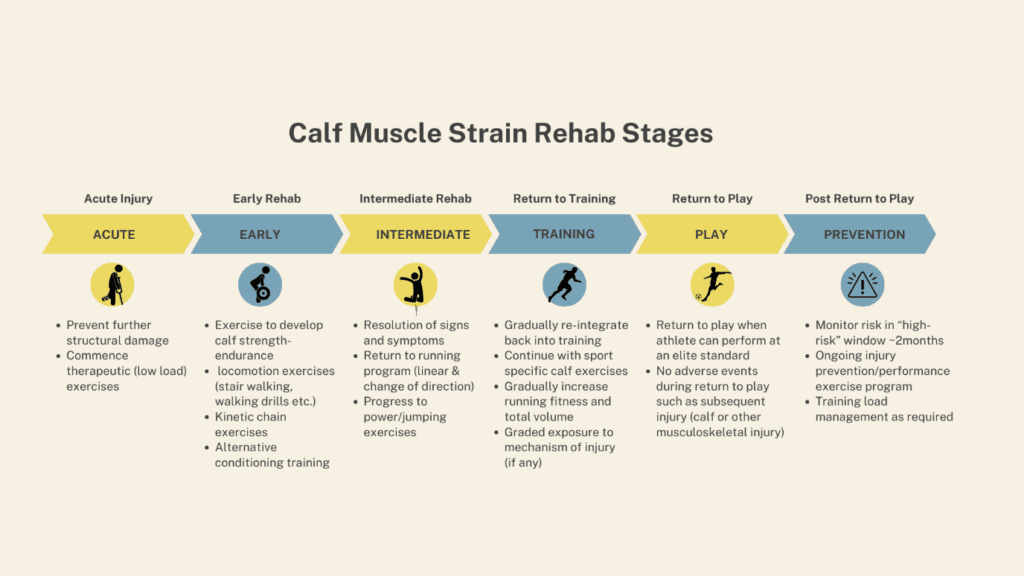
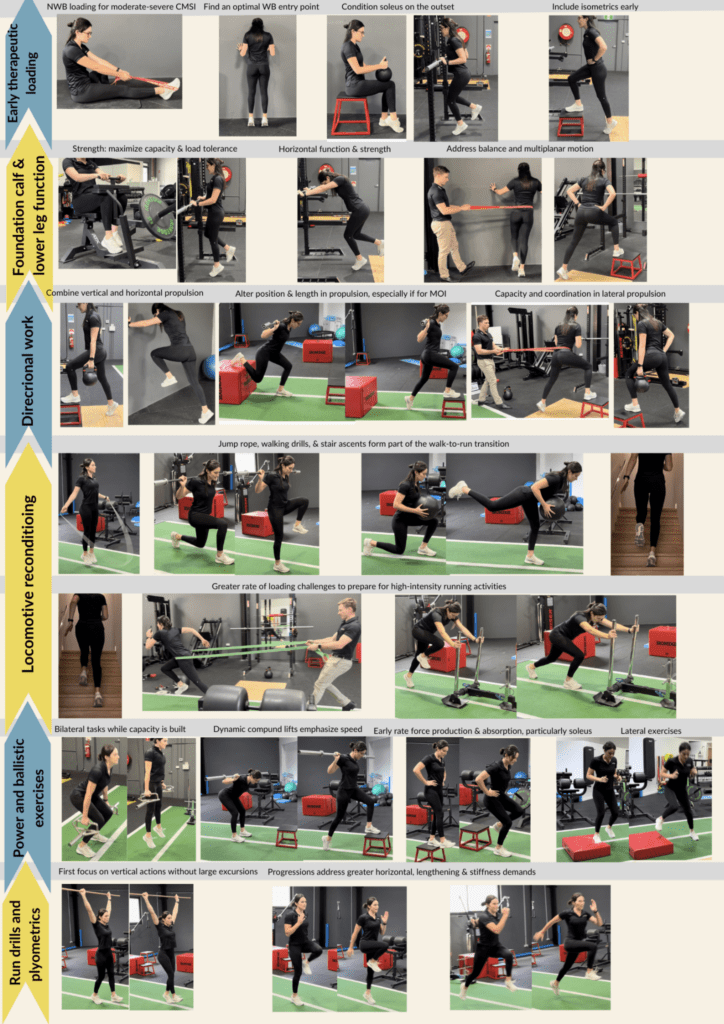
Preventing Future Calf Strain: Strengthening Tips
Preventing future calf strains is as important as treating them. This involves engaging in regular strengthening exercises, maintaining flexibility, and ensuring proper warm-up routines before activities. Consulting a physiotherapist for personalised advice is beneficial in devising an effective prevention strategy. Calf rehabilitation can be complex; however, a structured rehabilitation plan can lead to improved outcomes.
Consulting a Professional: Guidance for Calf Strain Recovery
For athletes who have recently suffered a calf muscle injury or are experiencing recurrent calf tightness, consulting with a professional is essential. At Coast Sport, our team of physiotherapists is dedicated to developing individualised rehab programs to assist athletes in performing well, feeling well, and moving well.
References & Citations
- Green B, McClelland JA, Semciw AI, et al. The Assessment, Management and Prevention of Calf Muscle Strain Injuries: A Qualitative Study of the Practices and Perspectives of 20 Expert Sports Clinicians. Sports Med Open. 2022 Jan 15;8(1):10.
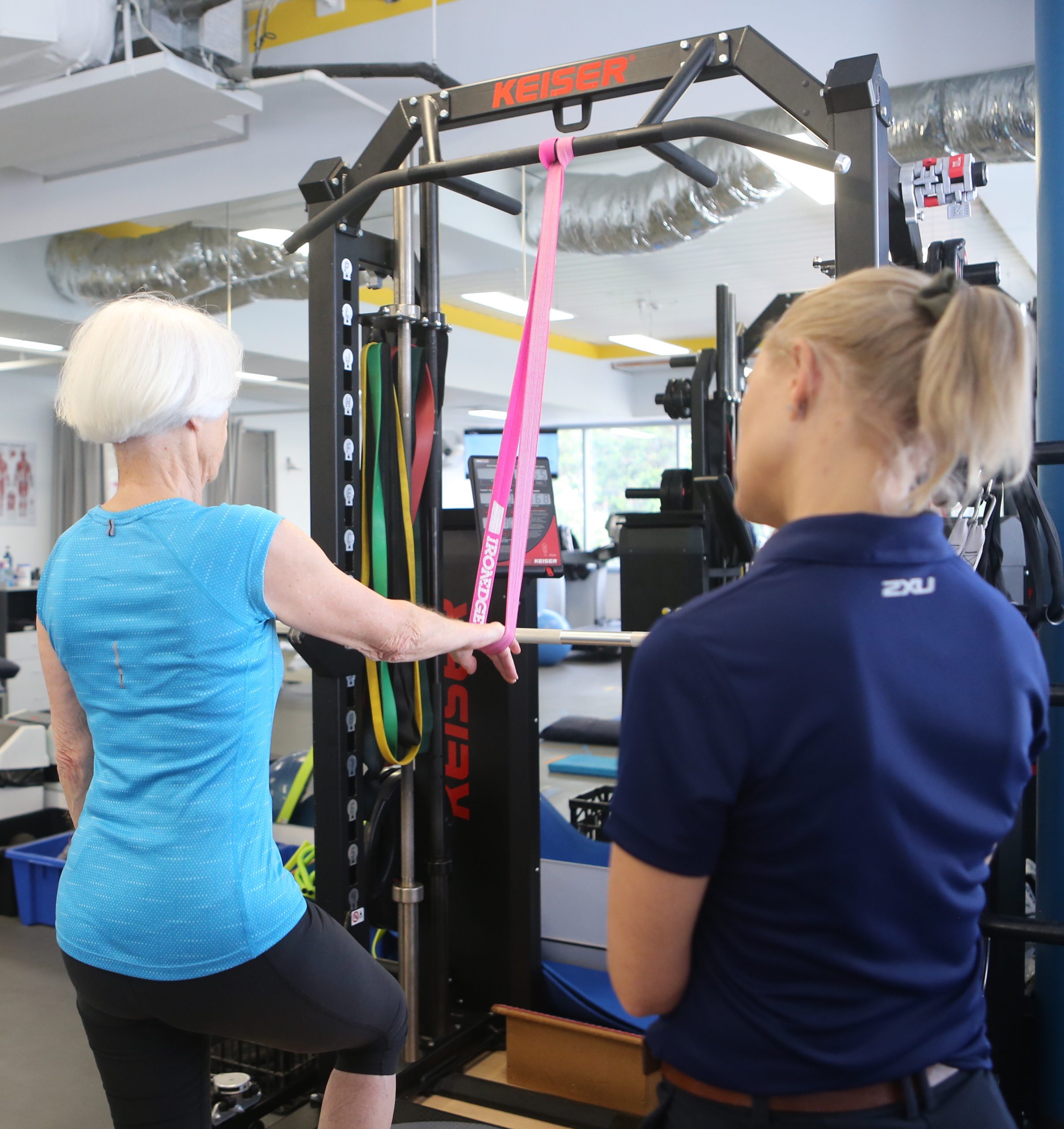
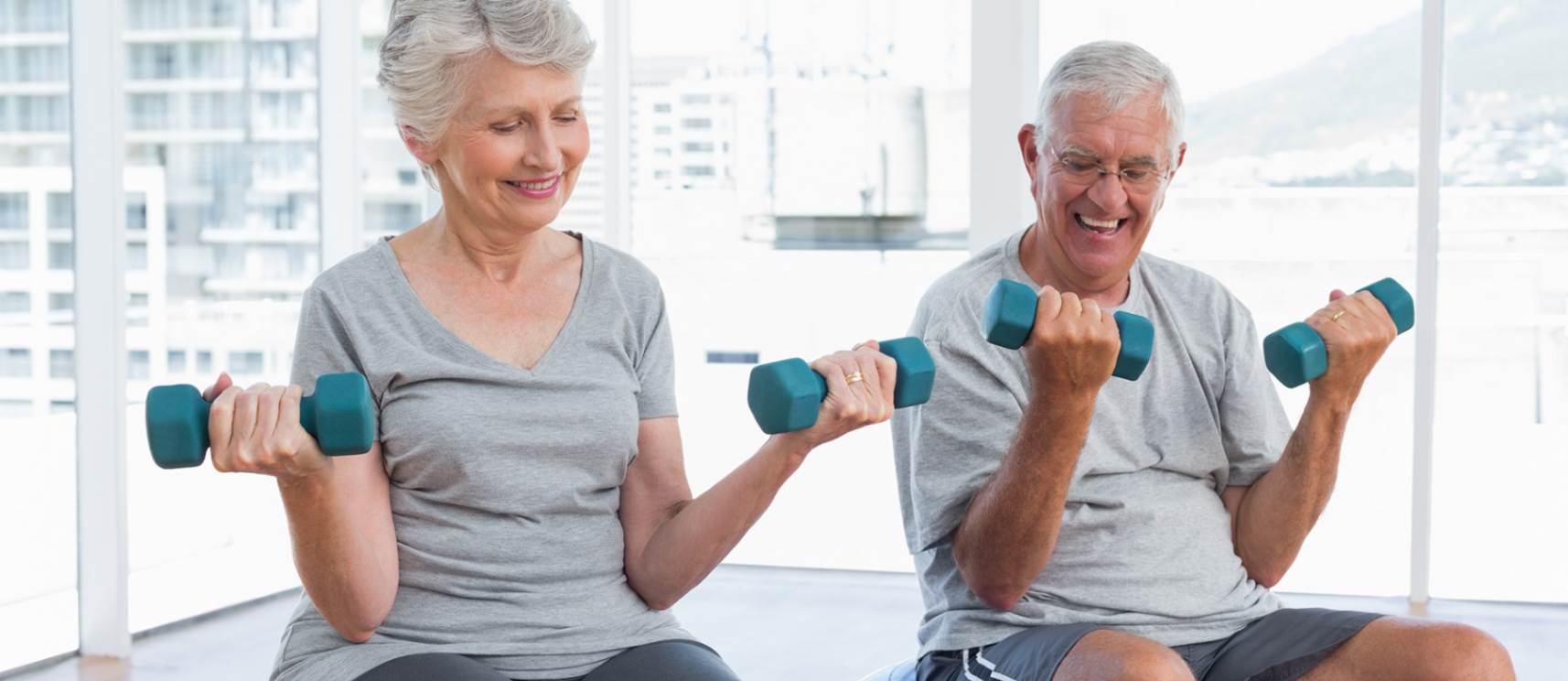


 Helping the Central Coast Feel Well, Move Well and Perform Well!
Helping the Central Coast Feel Well, Move Well and Perform Well!